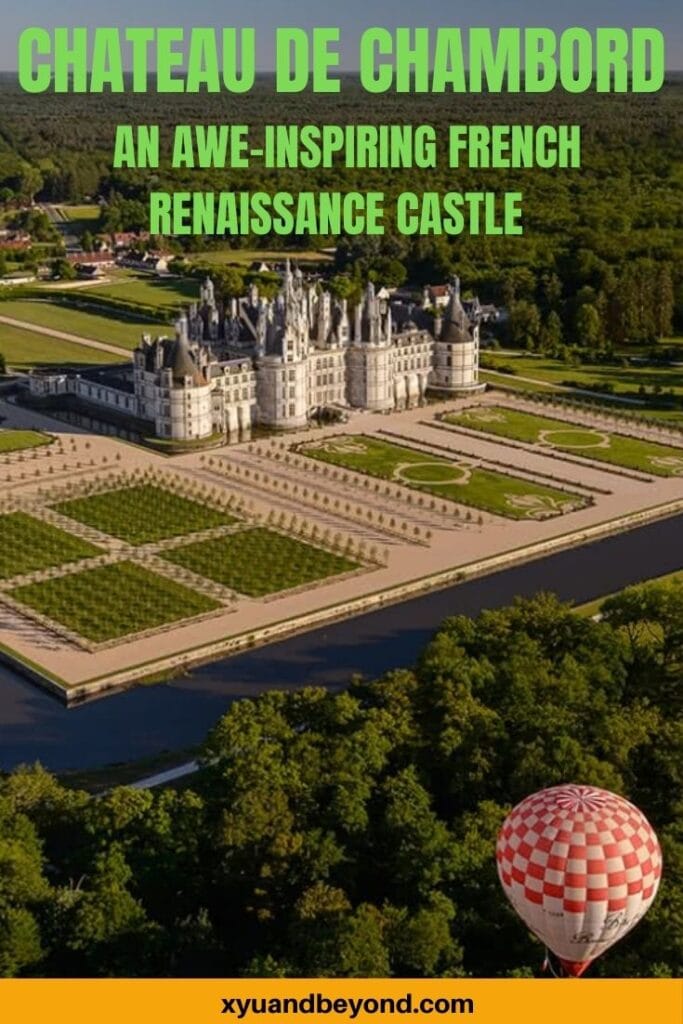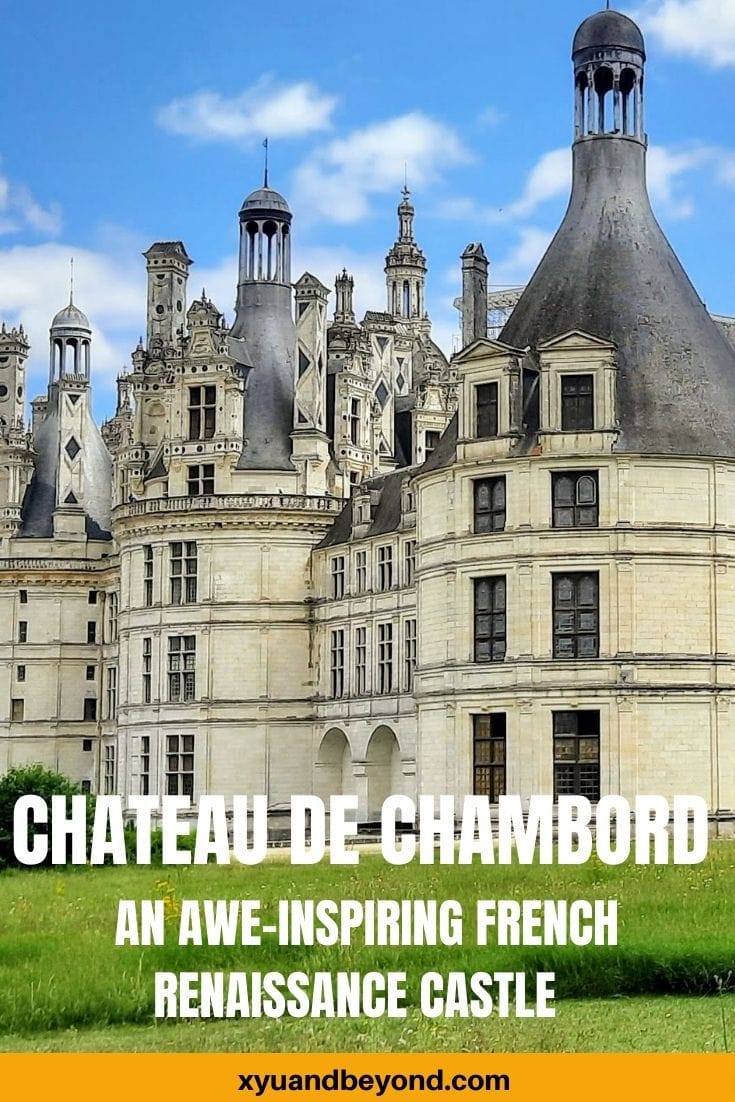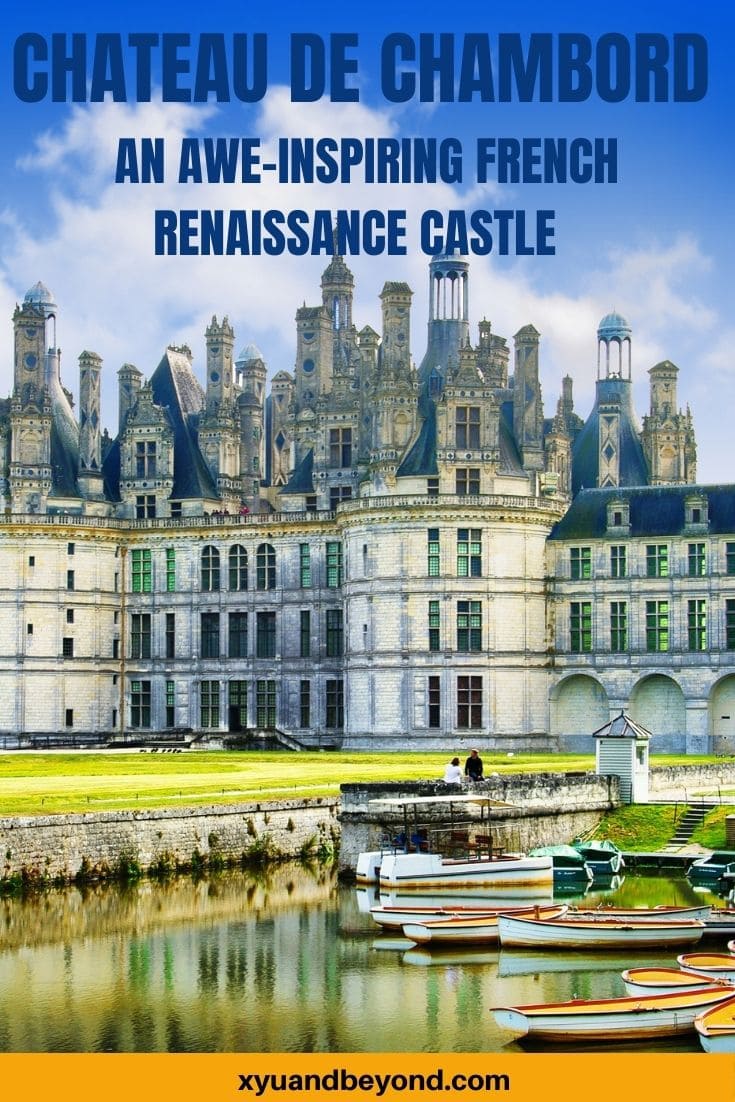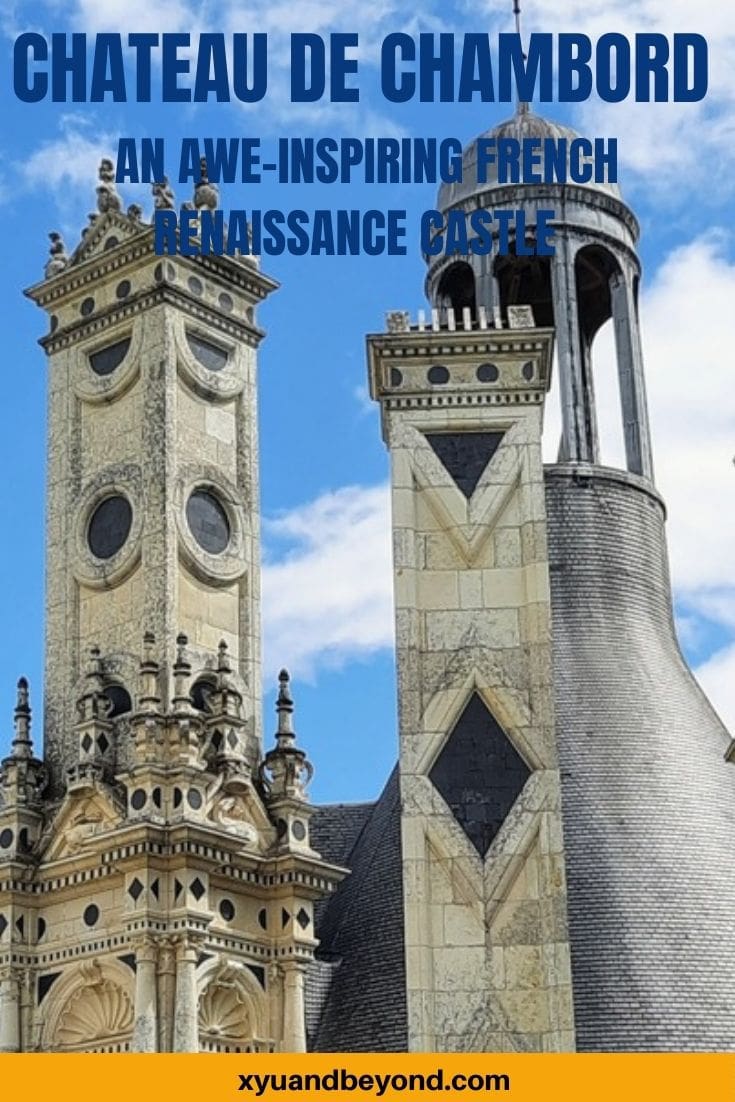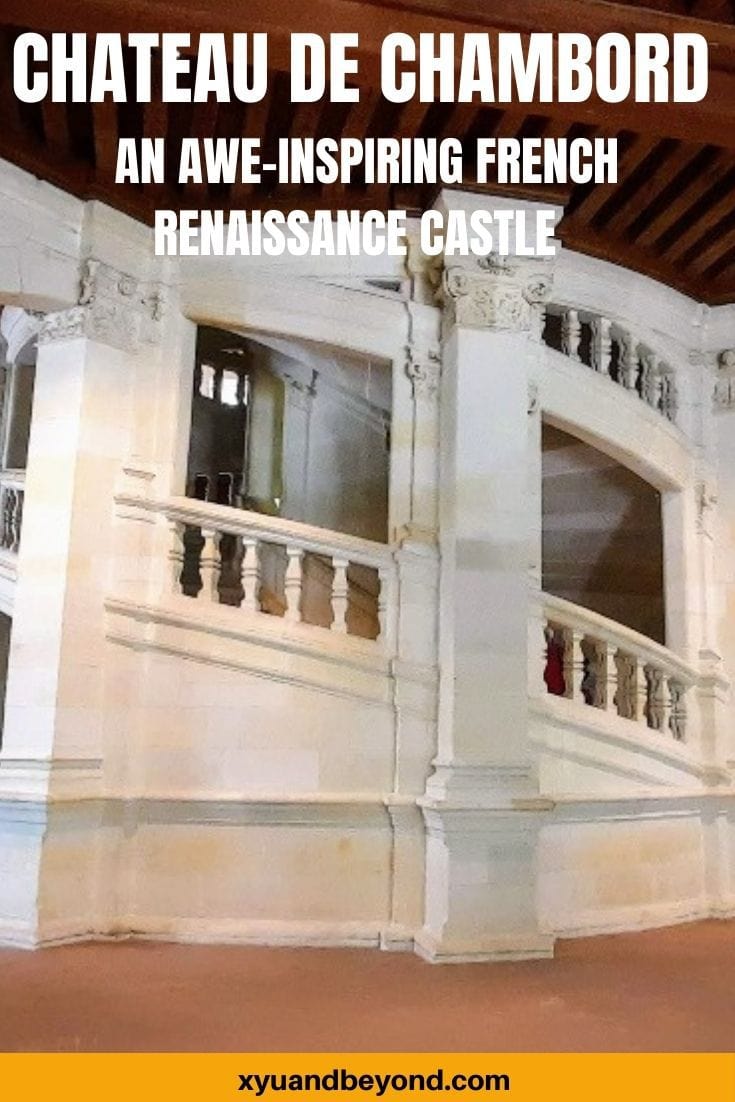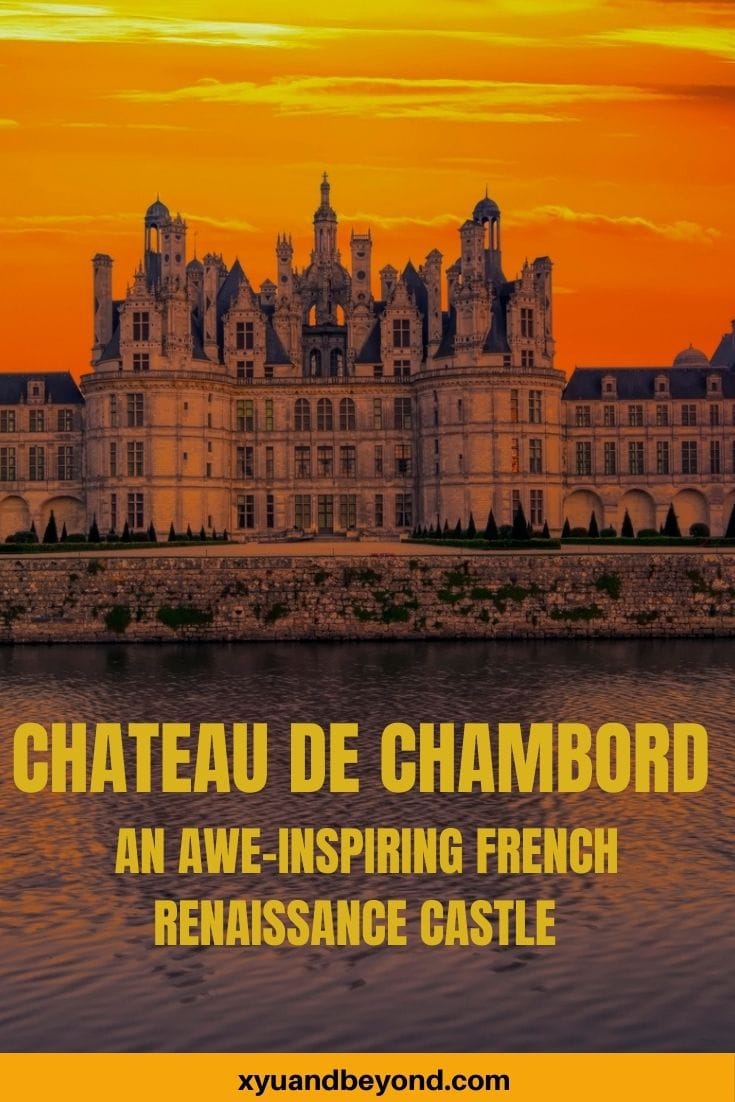Ultimate guide to le Chateau de Chambord France– an awe-inspiring Renaissance Castle
Le Chateau Chambord (or as we say in English Chambord castle) is one of the most impressive castles and was one of the many chateaux I simply had to visit when in the Loire Valley of France. The outstanding Chateau of Chambord is a major tourist attraction and was classified as a UNESCO World Heritage site in 1981 and it sits within the realm of the Val de Loire or Loire Valley. The Loire Valley was added to the World Heritage List by UNESCO for its cultural landscapes in 2000.
If you want to see some great pictures of Chambord and Chenonceau watch the Serpent Queen a brilliant new TV series about Catherine de Medici. The show is an American one based on Leonie Frieda’s book “Catherine de Medici: Renaissance Queen of France.
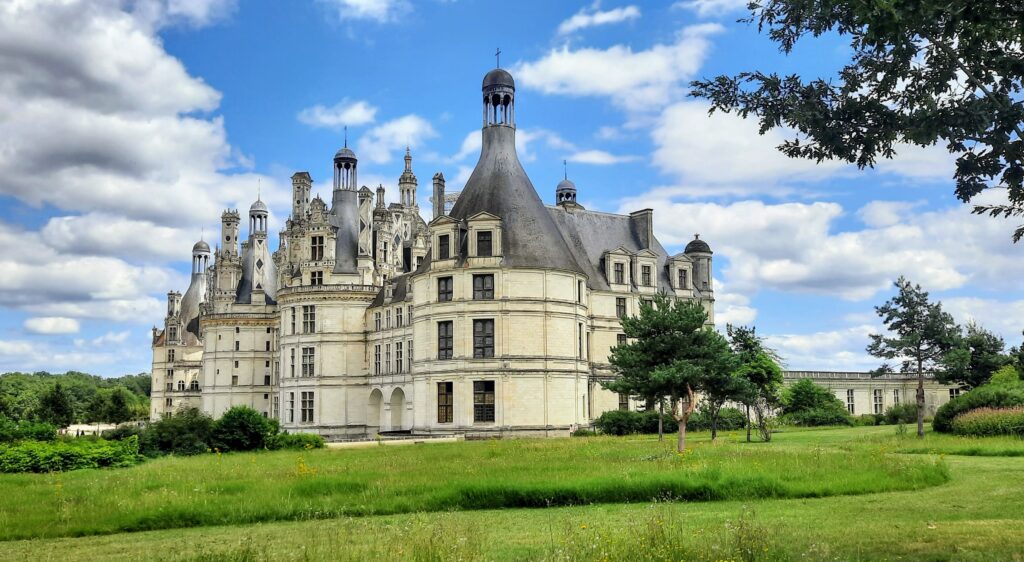
Here’s my guide to visiting le Chateau Chambord and I also write about how to get around the Castle of Chambord as the grounds and the castle are absolutely massive.
Chateau Chambord France
The only commune in France owned entirely by the state, Chambord lies in the 13,600-acre (5,500-hectare) National Hunting Reserve and Breeding Park, which is surrounded by the longest wall – 20 miles – in France on the Loire River. The famous Renaissance château Chambord has 440 rooms, 85 staircases and 365 fireplaces and is the largest of the Loire chateaux.
- Ultimate guide to le Chateau de Chambord France– an awe-inspiring Renaissance Castle
Xyuandbeyond is reader-supported. When you buy through links on our site, we may earn an affiliate commission. You can read my privacy policy here.
How to get to the Chateau Chambord
We actually drove to Chambord from Amboise where we were staying for a few days to enjoy the beauty of the Chateaux in the Loire region. It lies about an hour’s drive from Amboise.
Parking at Château de Chambord
There is plenty of parking at Château de Chambord but you do have to pay for it – we paid €5 euro for our visit which was around 5 hours. The walk from the parking lot can be extremely long so if you have mobility issues you need to keep this in mind.
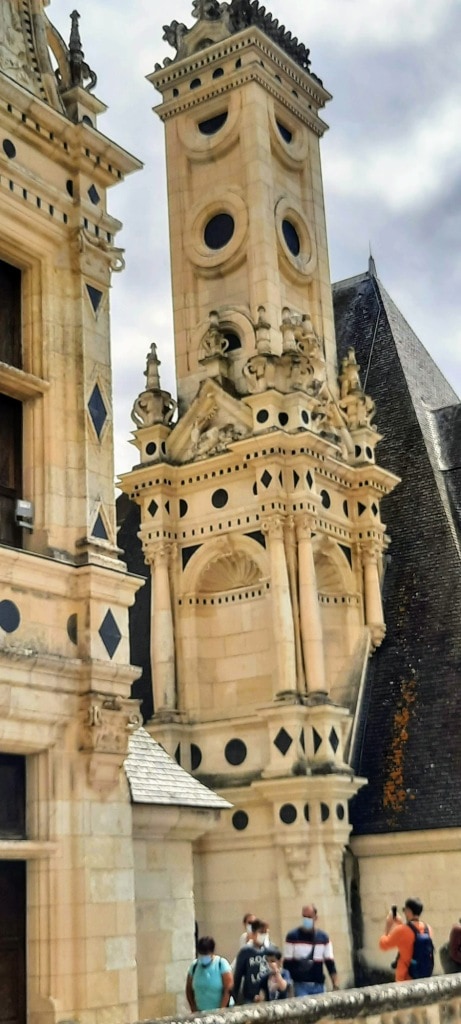
Chateau de Chambord from Paris
The Chateau de Chambord is 2 hours south of Paris and there is a train to Blois-Chambord which takes about an hour and a half. We drove from Lassay which took just under 3 hours to Amboise and then an hour from there. The tolls from the Mayenne cost us €19 euros there and back so if you want to save that cost make sure you google non-toll roads.
Once you get to Blois if you have taken the train you can grab the shuttle Château Chambord which takes around 25-minutes. The shuttle also does a circuit of Blois, Chambord, Cheverny and Beauregard.
This is called Remi which offers a Circuit des Châteaux bus usually from April to early September. These “Navette Châteaux” buses depart from Blois station daily at 9:30 and 11:30 am for the 40-minute ride to Chambord. The return buses from Chambord depart at 14:10 and 16:10 and stop en route at Cheverny and Beauregard. The single fare is €6 and gives a discount of around €2 on admission to the chateaux in Blois, Cheverny, Chambord, and Beauregard. Chenonceau is around an hour’s drive from Chambord so better to see it on a different day.
Day-trip excursions are available from Paris or other major Loire towns to Château de Chambord with Get Your Guide.
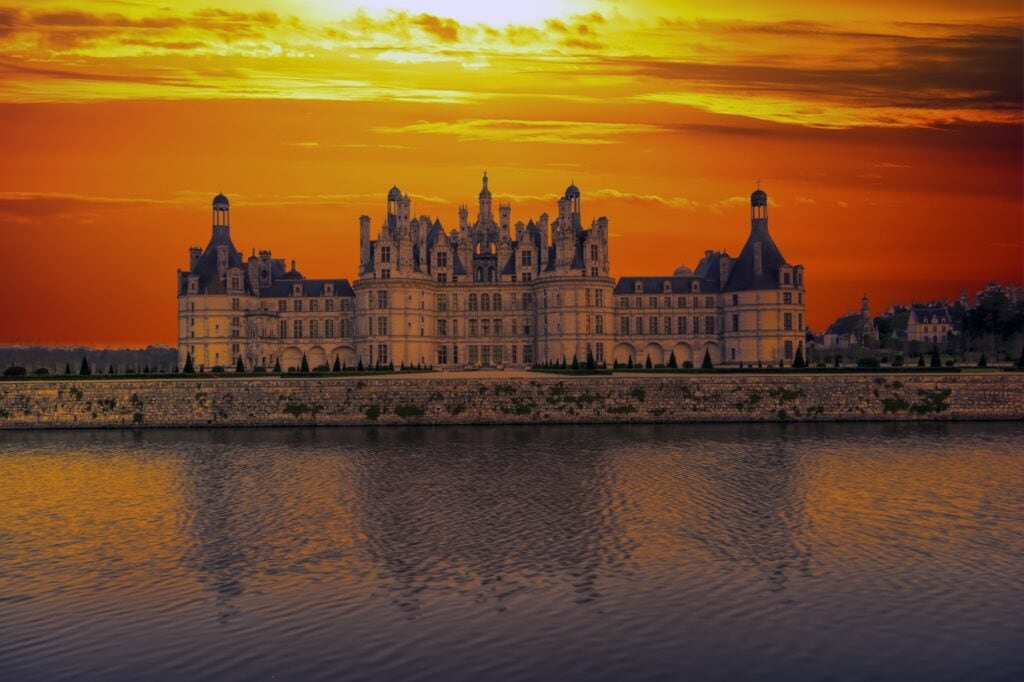
Chateau Chambord hours
Château de Chambord is open every day, year-round except December 25 and January 1. Opening hours are 10 am to 5 pm from October to March and 9 am to 6 pm from April to September.
Admission to Chambord Castle is €14.50 for adults, and free for children under 18 (and European Union residents up to 25). Guided tours and audio tours are optional. Admission is only charged for the chateau building itself – the park may be entered for free.
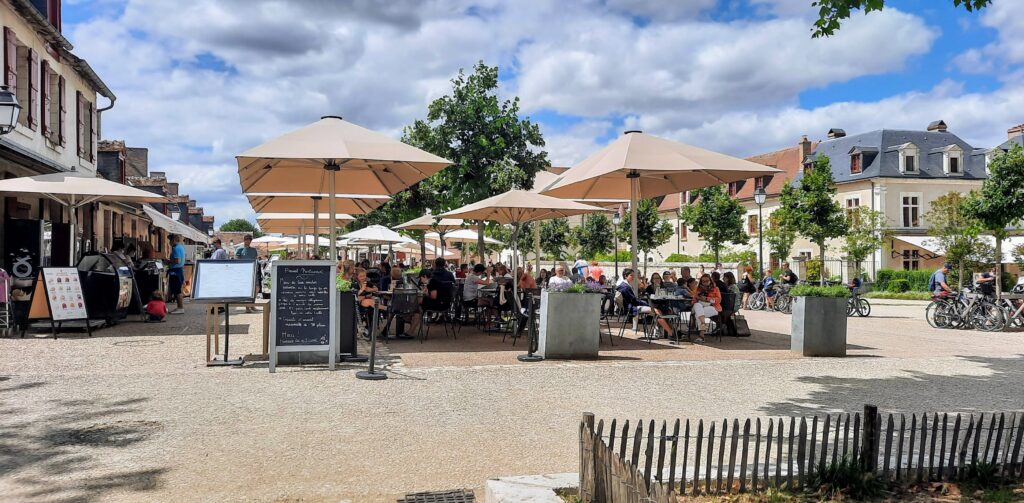
How to navigate Chambord Castle
The Castle and grounds are absolutely massive and sometimes feel endless when you have to walk them. But, there are some options available to you to be able to see the best of the Chateau.
The estate of Chambord covers 5440 hectares much of which is natural forest. There are several ways you can tour the gardens and forests or even explore the river itself.
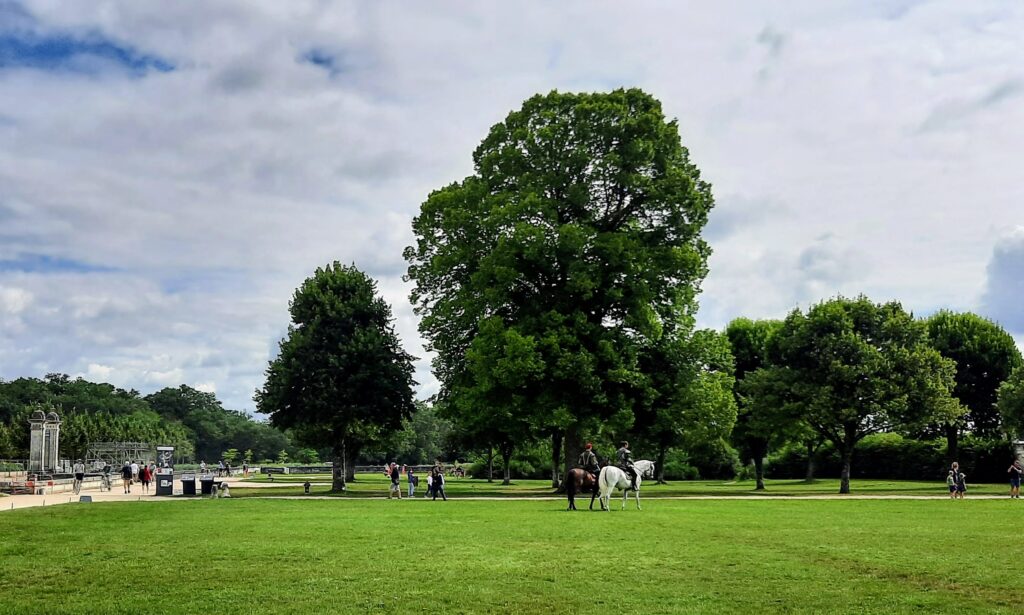
Forest Tours at Chambord
You can take a tour of the forests and areas that you would not normally be able to see as a tourist in an all-terrain vehicle with a guide and explore the largest enclosed nature reserve in Europe. If you are lucky you may cross paths with the wild boars and stags that live on the reserve. The journey takes an hour and a half cost 8€ per adult and departs 3 times a day.
Boat Trips on Castle Chambord Canal
An electric boat trip on the canal at the foot of the castle offers another unique perspective. Rental rates are €16 for a boat for 2.
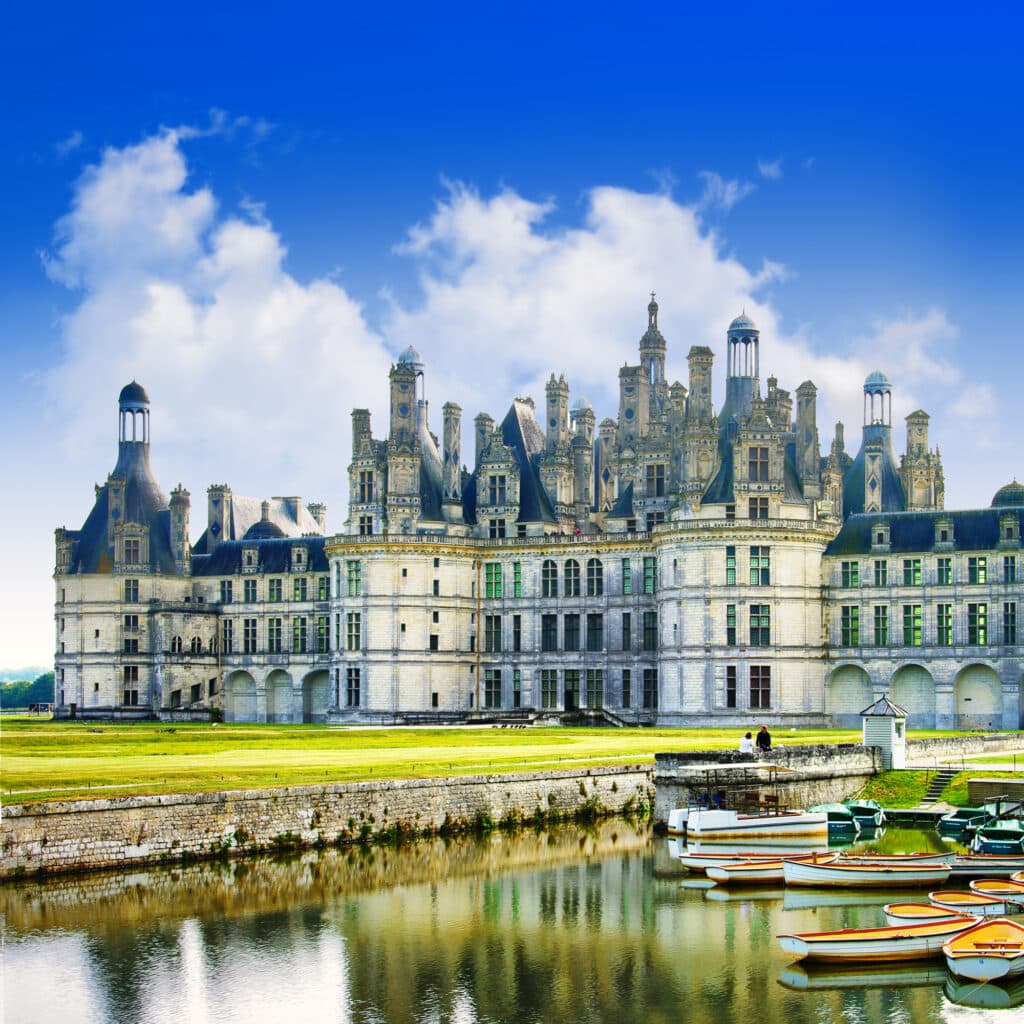
Stroll around the Chambord castle by bike or rosalie
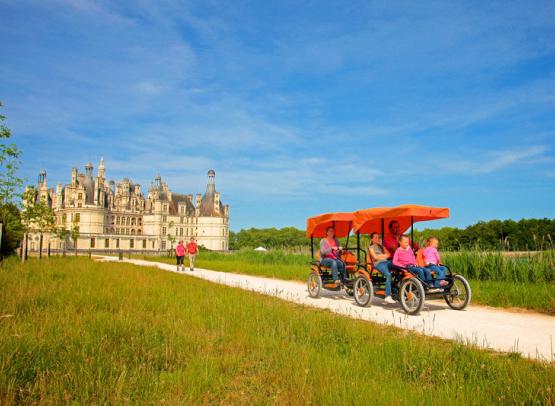
You can also cycle on any of the 15 km paved roads and marked paths around the gardens of the Chateau on your own bike or rent one from the Castle for €7.00. If you would like, you could also rent a Rosalie, a bicycle carriage that fits 2 adults and 2 children for €20 euros.
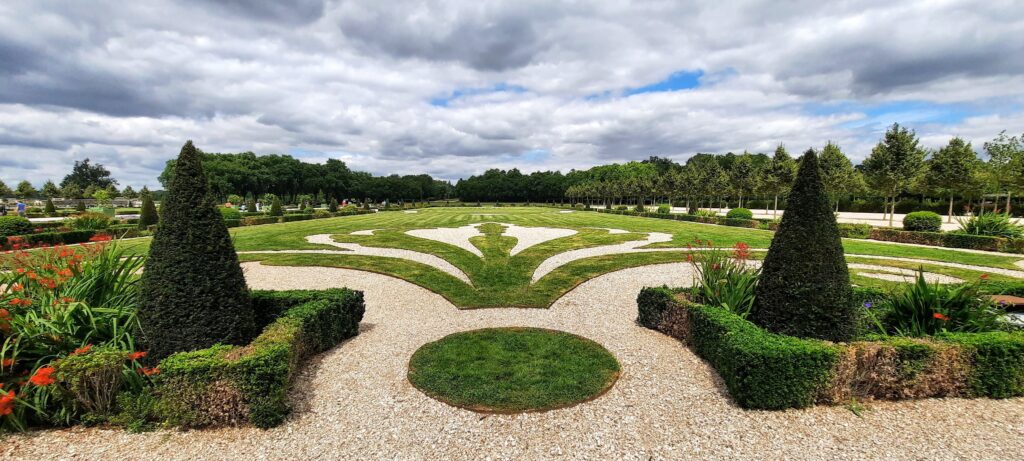
Golf carts
Discover the parks and pathways on a golf cart the cost for this is around €28 for 45 minutes.
History of the Royal Château de Chambord
Chambord was built in 1519, and King François I undertook the construction of a new royal house (château) in Chambord, in the heart of the game-rich marshlands of Sologne on the banks of the River Cosson. François wanted to create a Palace imbued with medieval traditions and Renaissance ideas. This was a place he could invite foreign diplomats and royalty and even his arch-rival Charles V, Holy Roman Emperor who was also known as a German prince. When he died (in 1547), the chapel wing and the lower enclosure had yet to be completed.
The Château de Chambord was originally built as a hunting lodge but over time it blossomed into the largest chateau in the Loire Valley even though it was never truly finished. François, I created his private retreat, using 1,800 workmen over 15 years. You’ll see his signature salamander symbol everywhere. The internal arrangement represents an early illustration of the French and Italian approach, which involves organizing rooms into self-contained suites, deviating from the medieval tradition of corridor rooms.
The château was completely unfurnished during this period. Everything had to be brought in when the King arranged a hunting trip. King François I visited the château only a few times, between 1539 and 1545. During his last stay in 1545, the keep enclosure and royal wing were completed.
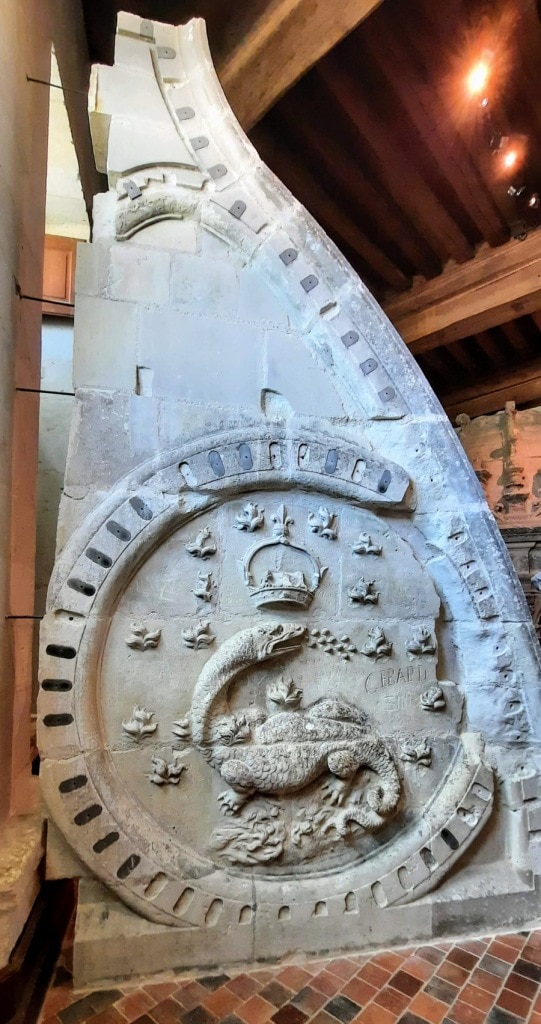
His son and successor Henry II continued the work on Chambord but never finished it. He raised a new wing and on the capitals and pilasters, he placed his emblem and that of his Mistress Diane de Poitiers: a crescent moon. The château features 440 rooms, 282 fireplaces, and 84 staircases. It was Henri II who completed the enclosure of the immense park with walls. Diane was given Chenonceau which was later taken from her by Catherine after Henry died.
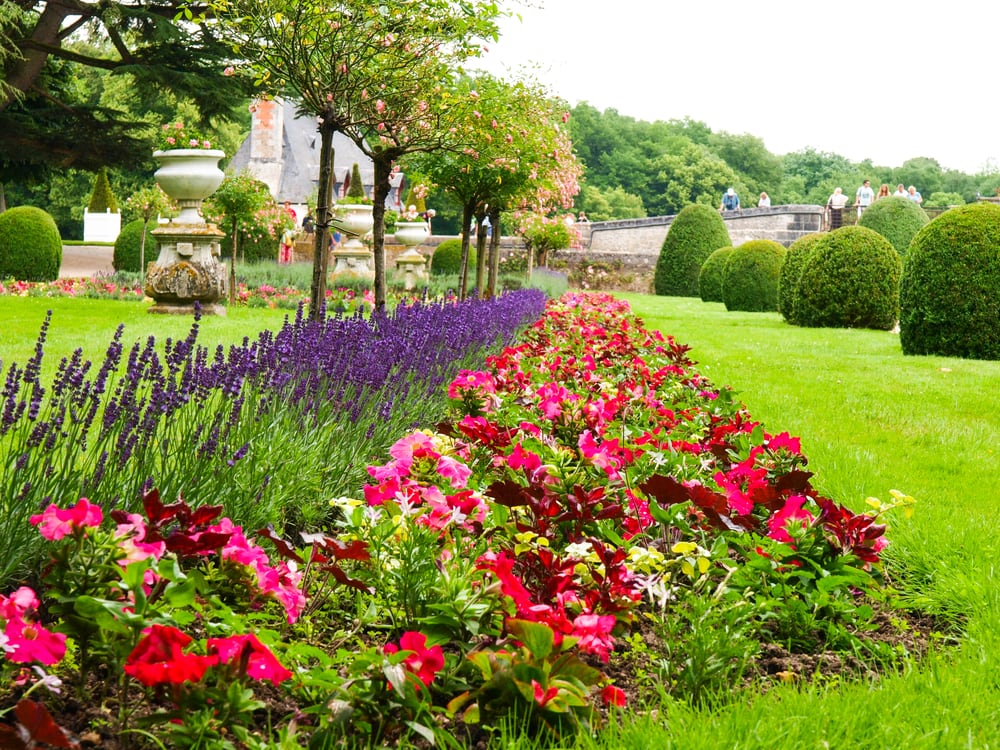
At the beginning of 1552, he waged war against Charles Quint. The King of France supports the German princes against the emperor. France occupies the three bishoprics of Metz, Toul and Verdun. On January 15, 1552, Henri II signed a treaty in Chambord by which France received the Duchy of Lorraine and the three famous bishoprics. The Treaty of Chambord is the only diplomatic convention ever conducted here.
After the death of Henri II following the funeral Catherine de Médicis, his widow, came to hunt in Chambord with her second son who became King Charles IX after the death of his brother François II.
It was King Louis XIV who came to Chambord and asked his architect to finish the Chapel and roof the attic wings where servants were to sleep.
Between 1660 and 1685, the Sun King stayed nine times in Chambord. he lived in the centre of the keep, in a new apartment, unlike François I who lived in a wing. On the first floor, he built a theatre where on October 14, 1670, Molière and Lulli gave the first performance of the comedy-ballet “Le Bourgeois Gentilhomme”. But from 1685, the king abandoned Chambord because building Versailles kept him busy and was much grander.
Only a few of the rooms are furnished but the main reason to visit is to see the magnificent architecture of Chambord. There are over 400 rooms, of which you may see around 40 or so, 300 fireplaces and that famous piece of architecture designed by Da Vinci the double helix staircase.
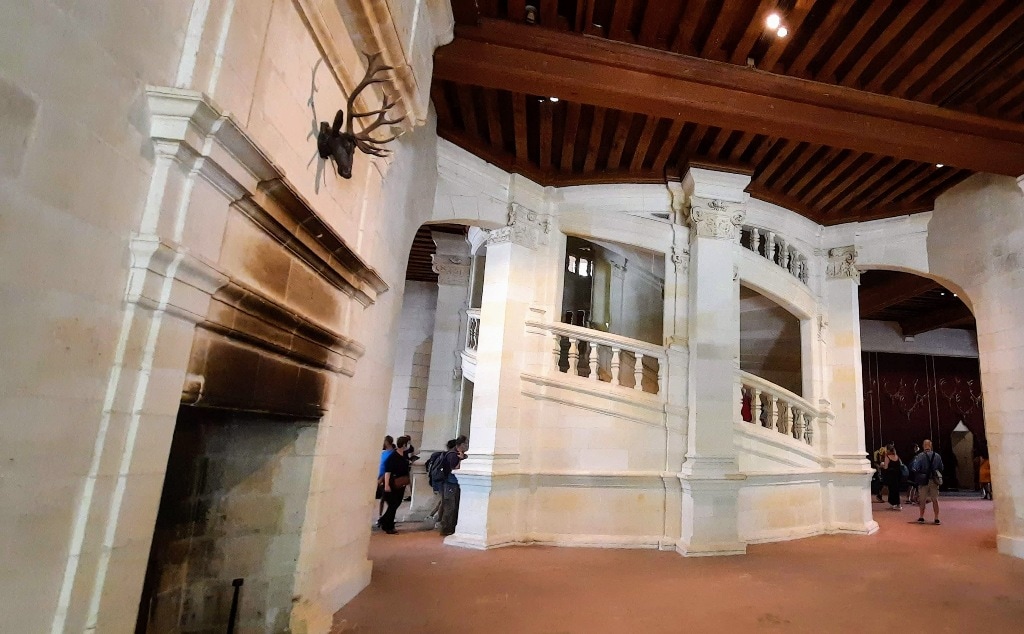
Chambord was rarely occupied by the French Kings although they did use the Chateau for their hunting parties. Furniture was only installed at the castle when there were royal visits.
However, in the 18th century, Chambord castle was occupied for 12 years. Much of the furniture on display and the present state of the building date from this era.
Tips for visiting the Château de Chambord
Try to visit out of season as in not July or August the influx of youngsters and students makes the Chateau quite overwhelming. If you do have to visit during these times go early in the morning when the Chateau opens or towards the end of the day when crowds are thinning out.
Only the ground floor of Chambord is accessible to wheelchair users, who are admitted for free. Certain areas such as the Café and Carriage rooms have a wheelchair lift available.
Chateau de Chambord interior
The main attraction of visiting Chambord castle is the magnificent building. It is the largest chateau in the Loire valley and is architecturally incredibly impressive.
Le Chateau de Chambord’s construction includes a Medieval square keep with four massive towers in each corner. There are two further castle wings that are enclosed by curtain walls. Although it has medieval foundations Chambord was never designed as a defensive building and is Renaissance in style.
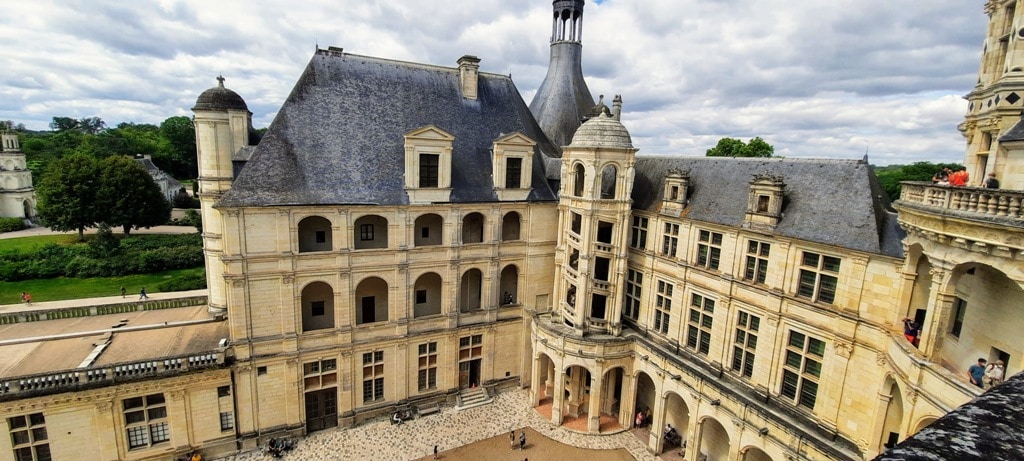
Chateau de Chambord rooms
When you visit Chambord Castle you will be able to visit 3 floors of the keep, which as I said are sparsely furnished or completely unfurnished. The double helix central staircase is the most unique feature of the Castle. Set in the centre of the castle it was a revolutionary design and an engineering masterpiece. Sadly, Da Vinci died during the construction phase of the staircase.
The roofline of chateau de Chambord has numerous turrets that give it its distinctive ‘skyline’: these are the tops of the staircases and chimneys inside the chateau.
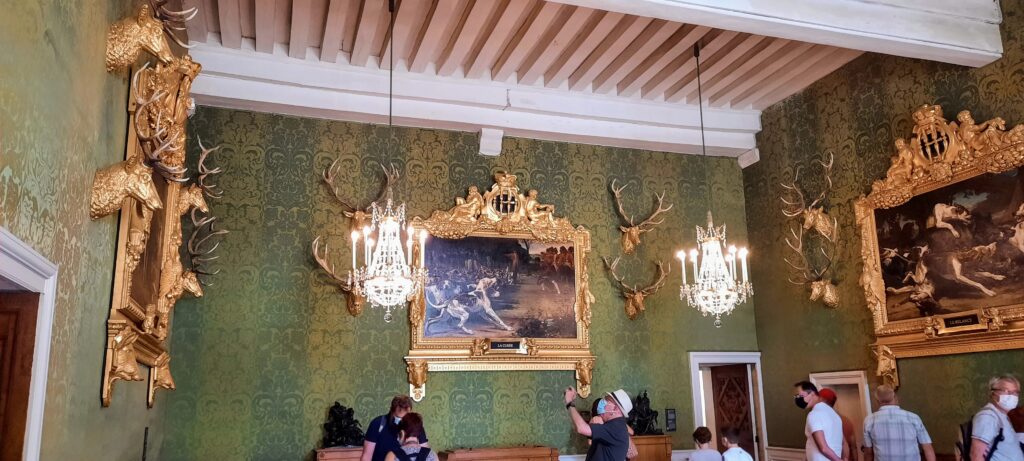
Ground floor
To be honest there is not much to see on the ground floor of le Chateau de Chambord but do take advantage of the video display to understand more about the castle and its history.
The Famous Da Vinci Chambord staircase
The double helix staircases were conceived by Leonardo da Vinci, who was living in France at Amboise, the ingenious double spiral staircase consists of a hollow central core and large easy to navigate stairs. From the ground floor of this massive chateau, these two staircases wind around a central illuminated well, visible to each other only in glimpses through small opposing windows. They twist up to the top of the chateau where they meet in the roof.
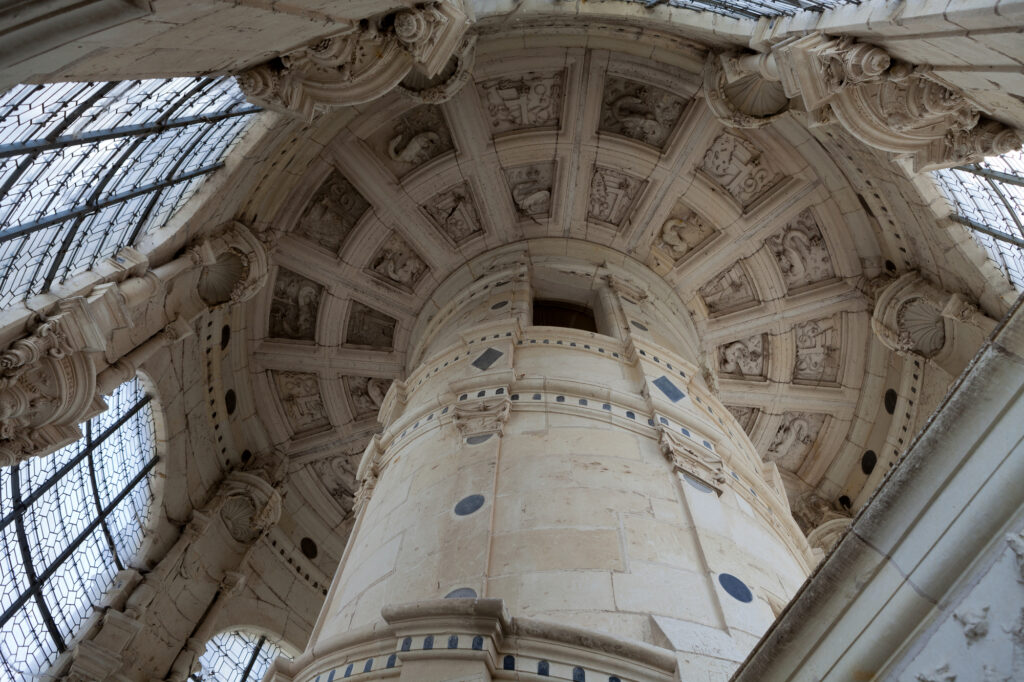
Legend has it that this configuration was designed so that Louis XIV, the Sun King, could arrange clandestine meetings with his mistresses at the top. The steps are supposed to be sufficiently shallow that a lady will not tire in ascending them.
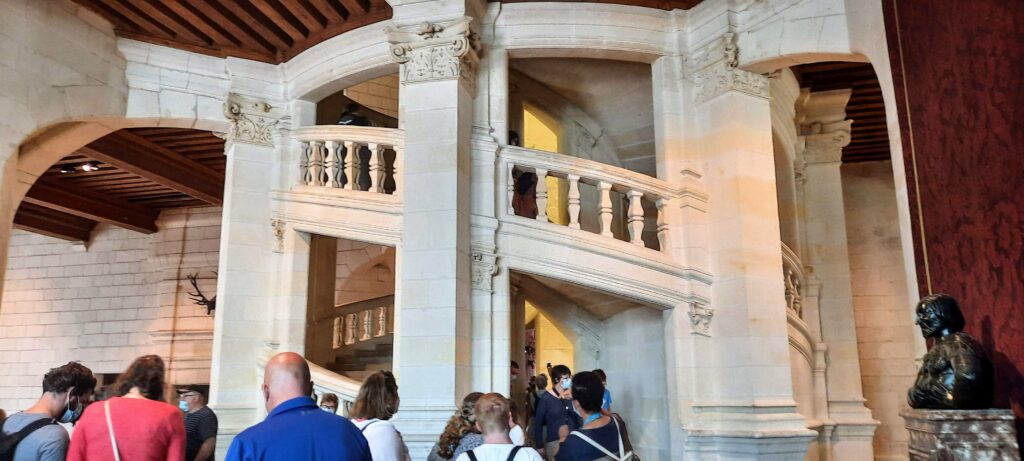
On the ground floor, you can watch an audiovisual presentation that explains the Castle of Chambord and its history and from there you can move through several rooms including the Rooms of the Bourbons.
If you continue at ground level you can move through the double doors either to the gardens or to the courtyard where you will find a café and restaurant along with the Room of the Carriages and the Lapidary room which is full of pieces that were originally decorated the castle.
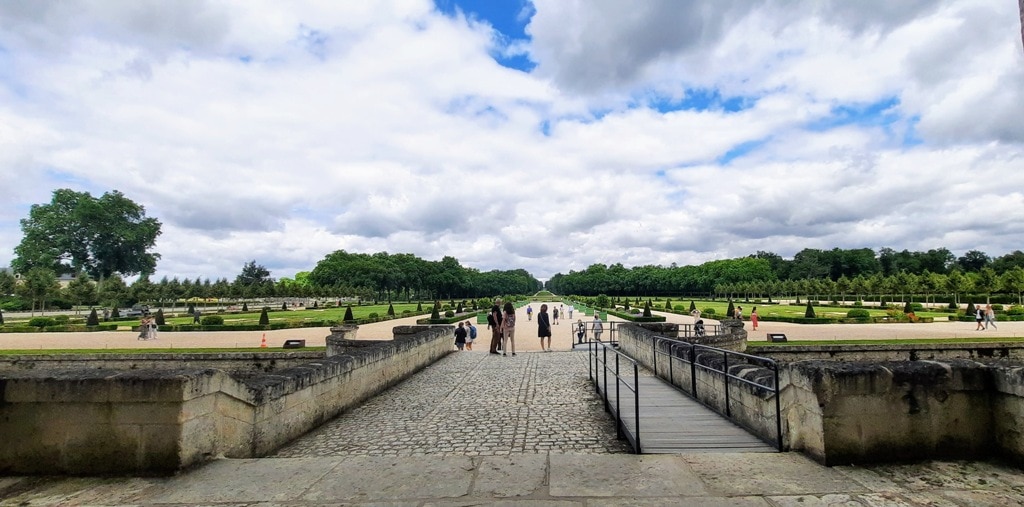
The Carriages generally date back to the 18th century and include phaetons and open carriages for the ladies to show off how fashionable and marriageable they were.
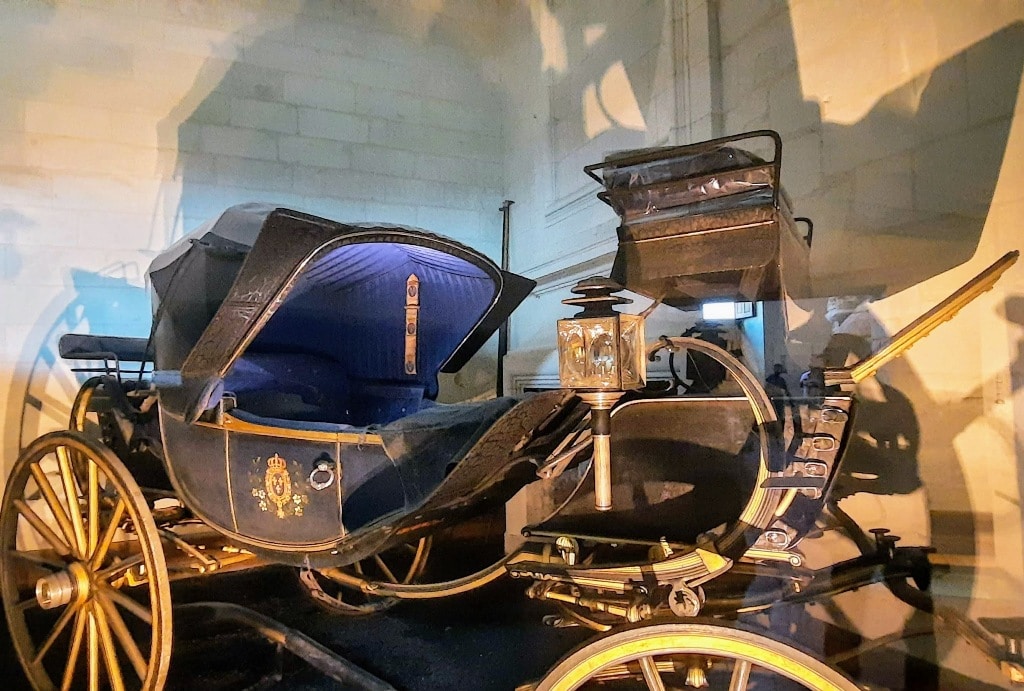
The Lapidary room is full of original parts of the Castle of Chambord that over time became so worn down with water damaging the soft tufa limestone they had to be replaced.
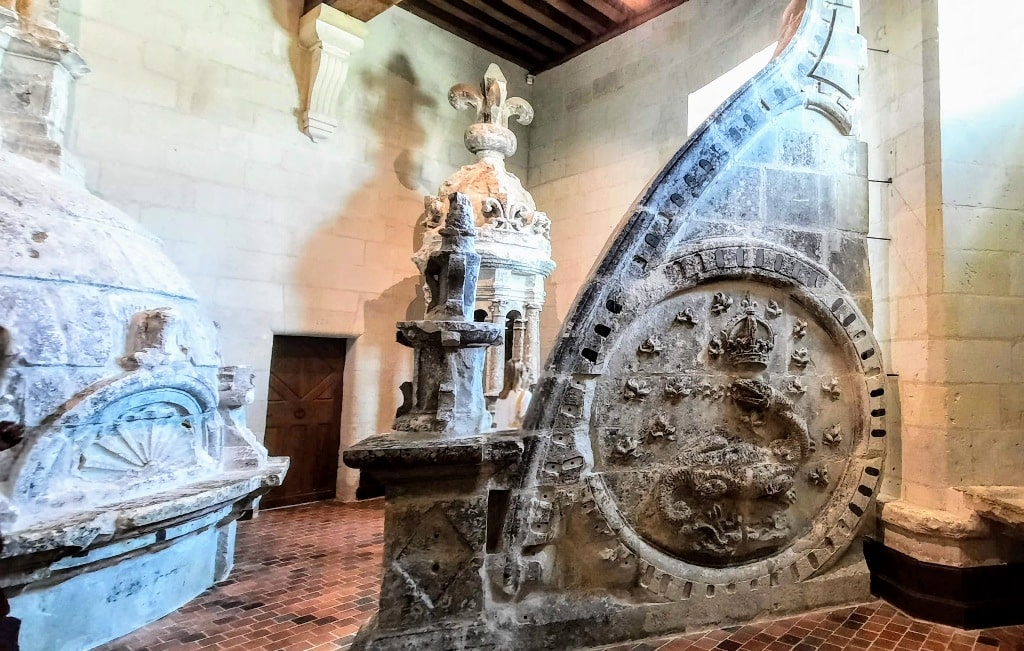
On the first floor – The castle of Chambord
The first floor has the more interestingly furnished rooms in Château de Chambord. You will see how some of the royal apartments were adapted in the 18th century to make them more comfortable. But even with the addition of tiled heater stoves, the Château de Chambord remained a pretty unpleasant place to live in during winter.
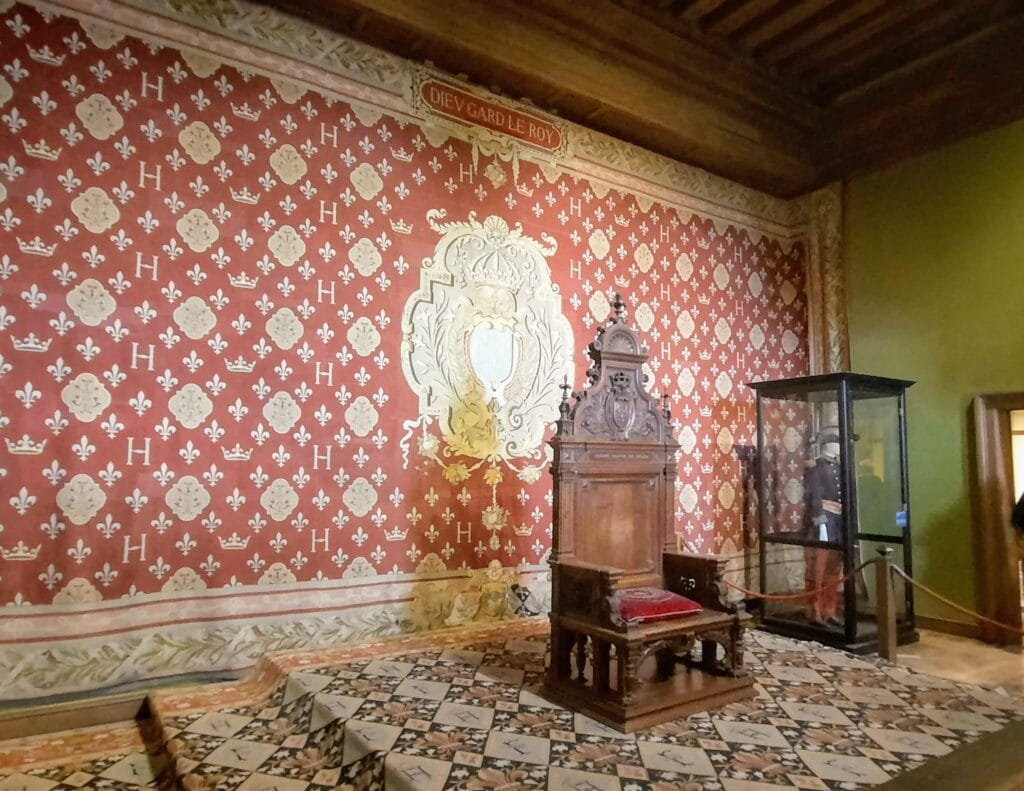
Most of these huge wood burners were auctioned off during the Revolution although one has now been found and reinstalled.
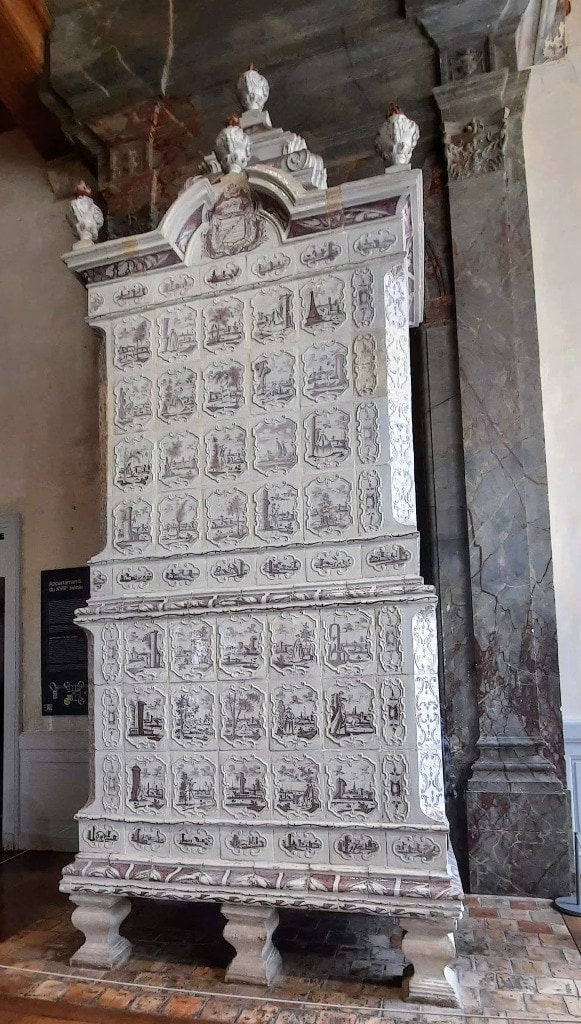
In the king’s wing, there is a warren of smaller rooms but you will see the grand bedrooms of Louis XIV, his wife Queen Maria Theresa chambers, and at the far end, François I.
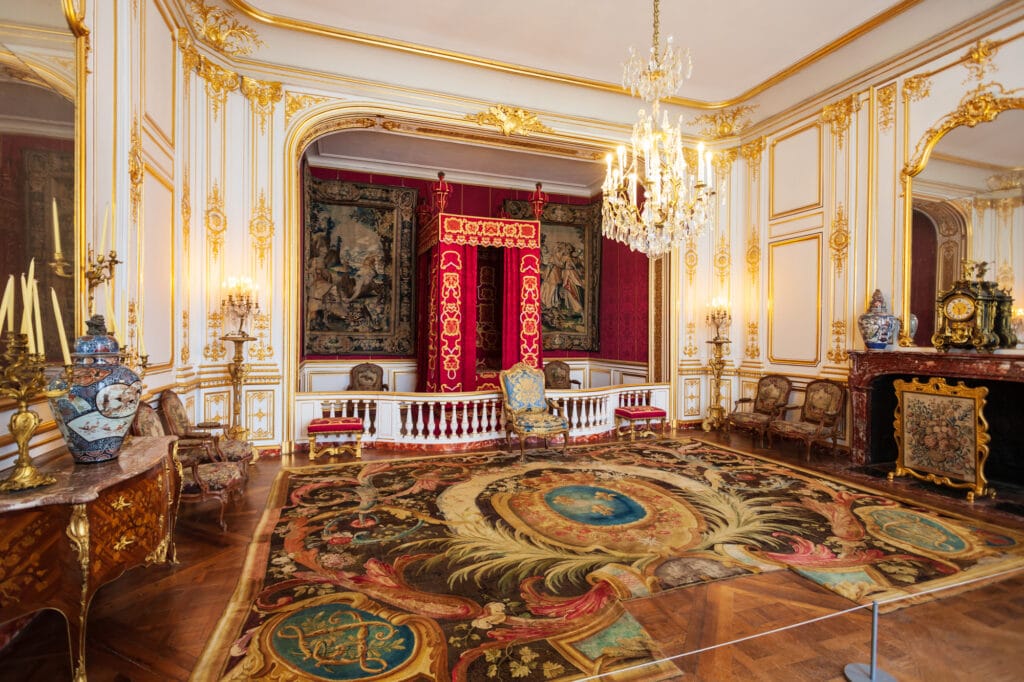
Look out for the rooms of the Count of Chambord, who was the final owner of the château. This 19th-century count, the last of the French Bourbons, was next in line to be the king when the Revolution took place and France did away with kings and queens.
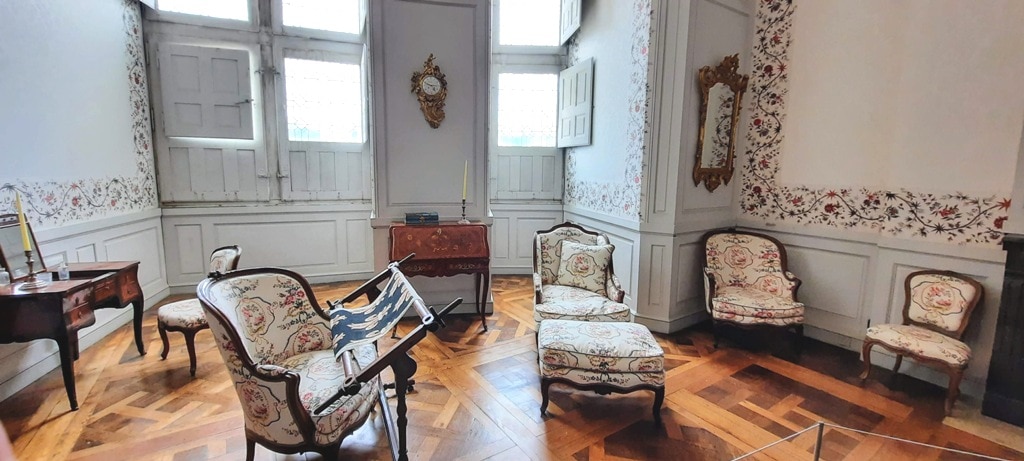
The chapel is the largest room in the chateau, although started by Francois I, it was only completed in the times of Louis XIV.
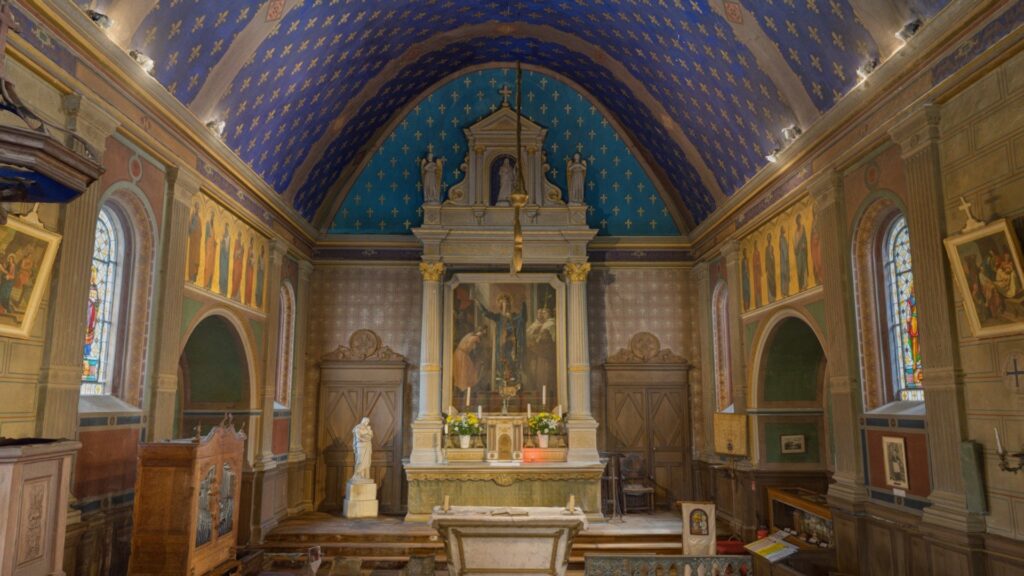
The Moliere Theatre was built for the Sun King when he came to play at Chambord this small theatre was the venue for Molière who presented for the first time in Chambord two of his famous ballet comedies, set to music by Jean-Baptiste Lully.
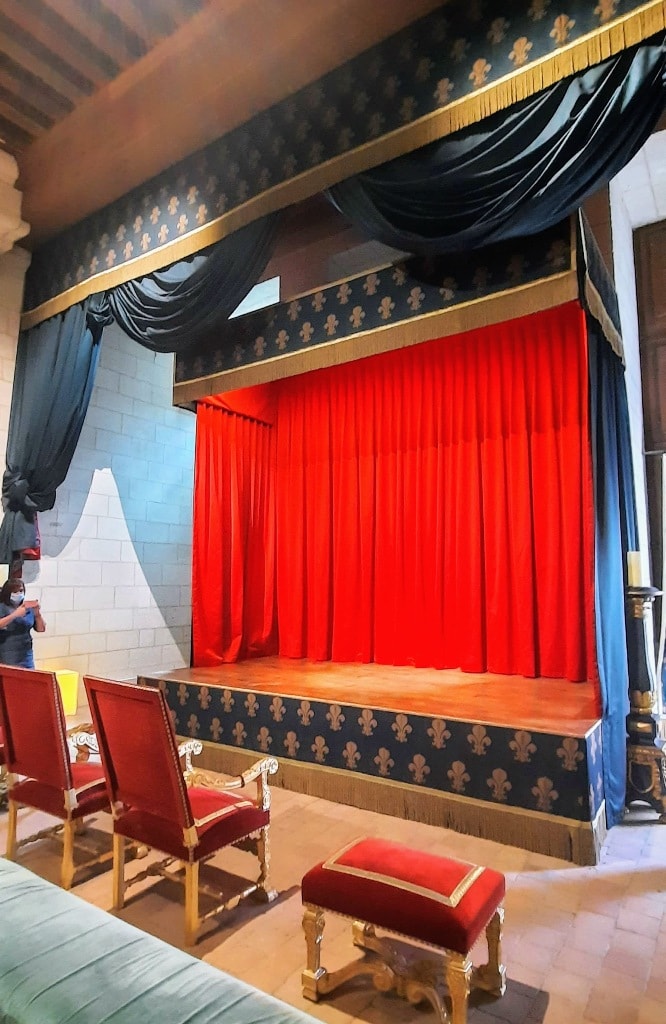
The State Apartment was created to conform to royal etiquette during the reign of Louis XIV. The rooms are furnished as in the time of the Maréchal de Saxe during the 18th century.
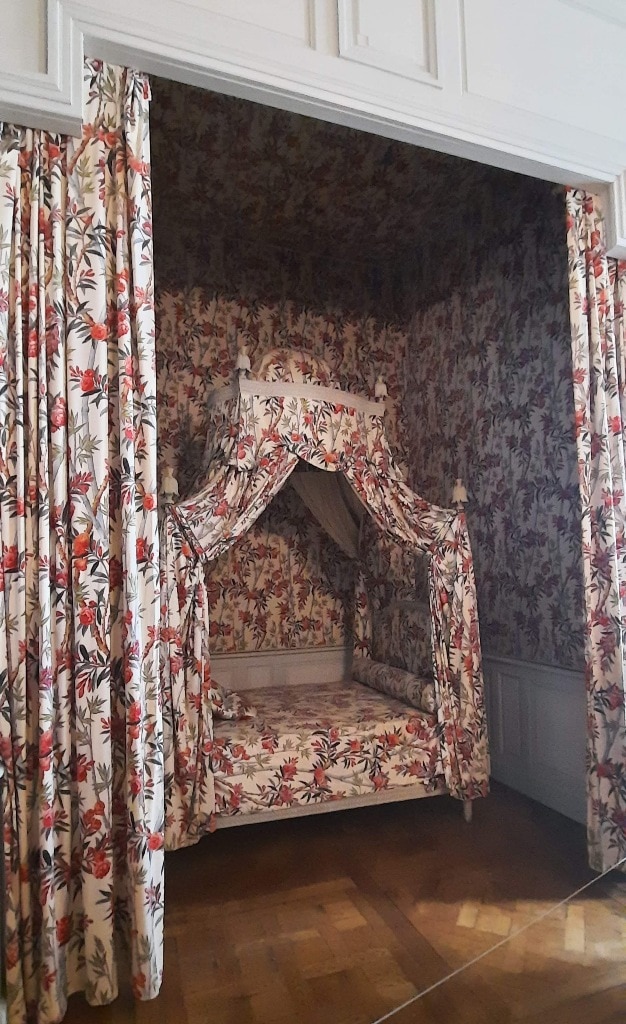
The Museum of the Comte de Chambord is the living quarters of the last Bourbon, who refused the throne offered to him in 1871.
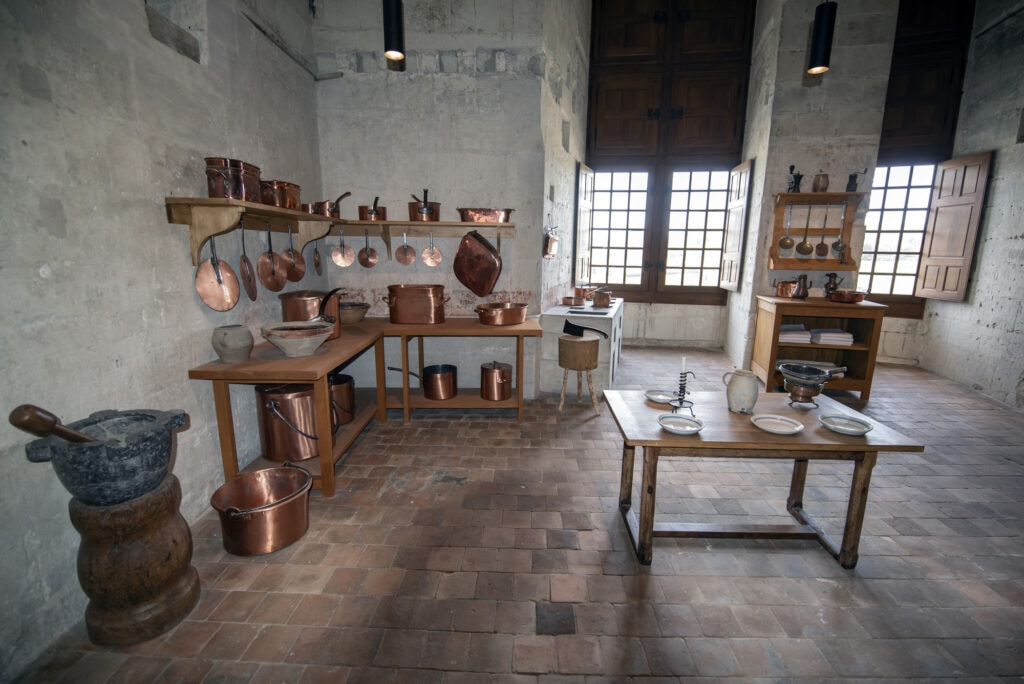
Second Floor of Château de Chambord France
There is not much to see on the second floor, but it has ongoing displays and exhibitions of French artists. There is also a Trophy Gallery and magnificent sculpted vaulted ceilings with Francis I carved symbol of the Salamander – Francis I’s symbol.
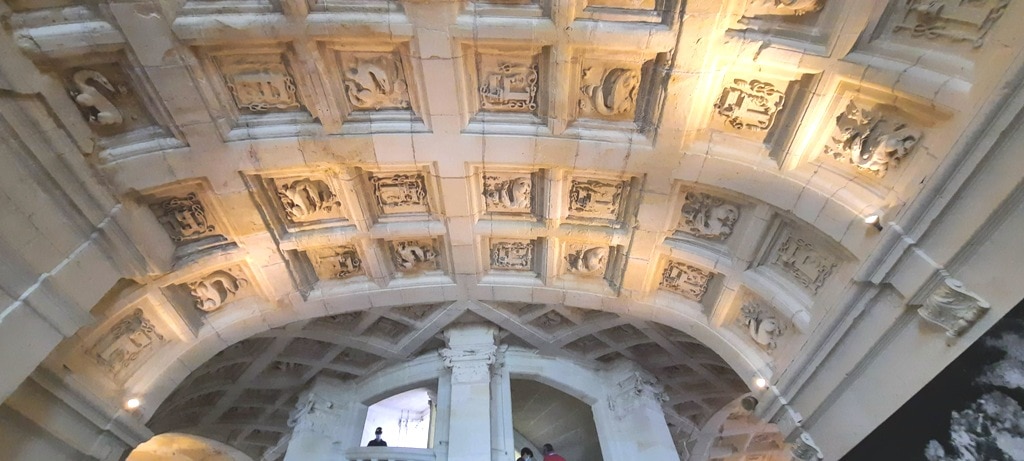
Third Floor of Chateau Chambord
This is where you can enjoy the absolutely stunning views of the gardens and close-up views of the architecture and terraces. You can also see the trophy gallery and admire the views of the vaulted ceilings. Walking the gallery notice that the square towers are the tops of chimneys and the round towers are the tops of staircases
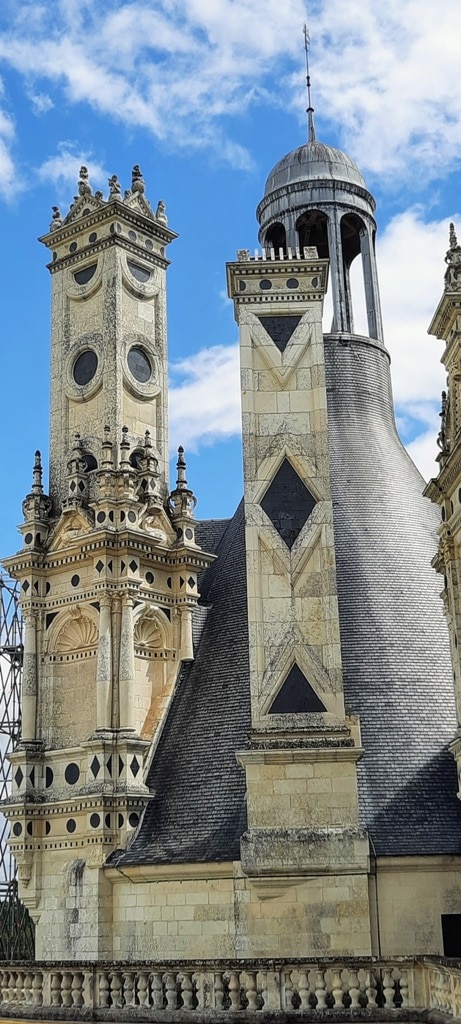
Château Chambord Formal Gardens
The Château de Chambord hosts several events throughout the year including one in the stables of the Count of Saxony. This grand cavalcade of horses and birds of prey will dazzle you with the horsemanship and the great birds reenacting the court of François I, Tickets cost €15,50 per adult. €12 from age 5 to 17.
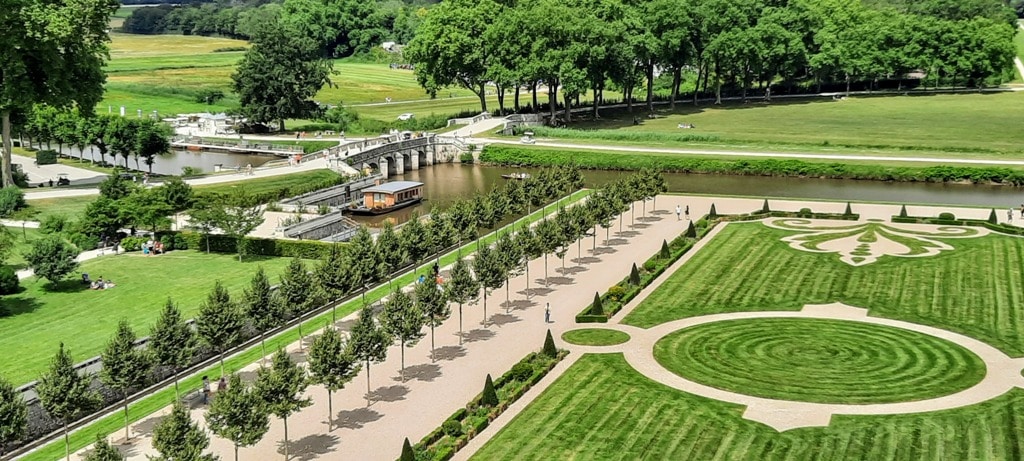
Château de Chambord Vineyard
In 1519, when François I had the first stones laid to build Chambord he brought a variety of Burgundy grape with him. Less than a kilometre away, in the shadow of the castle, the Ormetrou farm is one of the historical enclosures where vines were grown, up until the outset of the 20th century. Initiated in 2015, replanting began and now the Chateau has its own wine again.
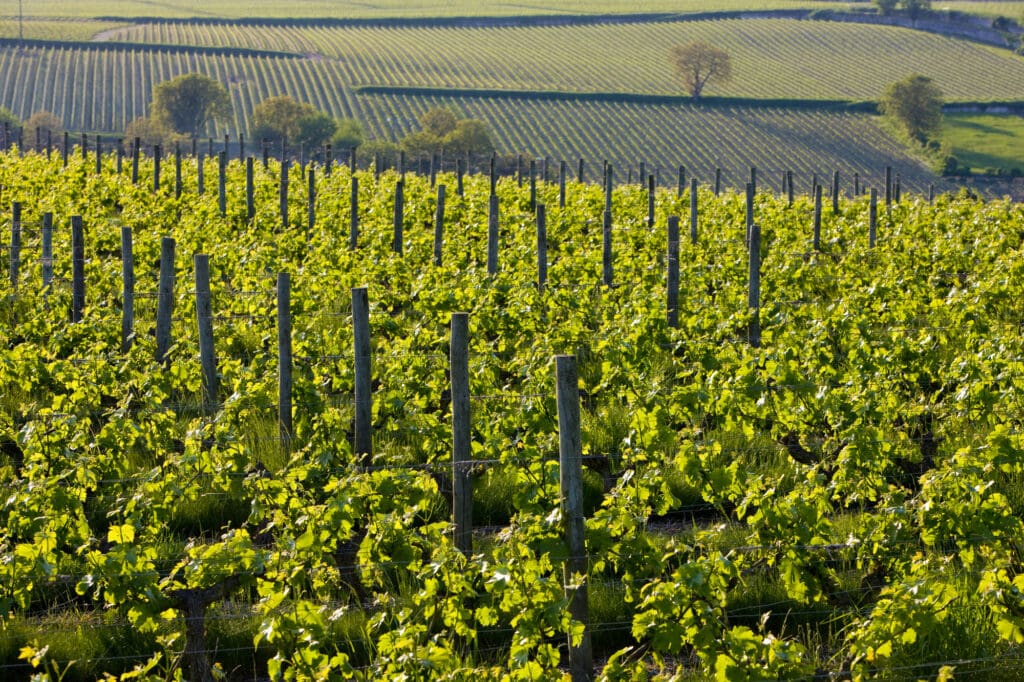
Château de Chambord Boutique
Along with the usual collection of figurines of knights, horses and ladies made in China, you can find a selection of products manufactured from the natural resources of the estate. The products on sale in the estate’s shop include leather goods manufactured from the hides of deer and boars inhabiting the forest of Chambord, honey, game terrines, objects in wood and objects manufactured from deer antlers.
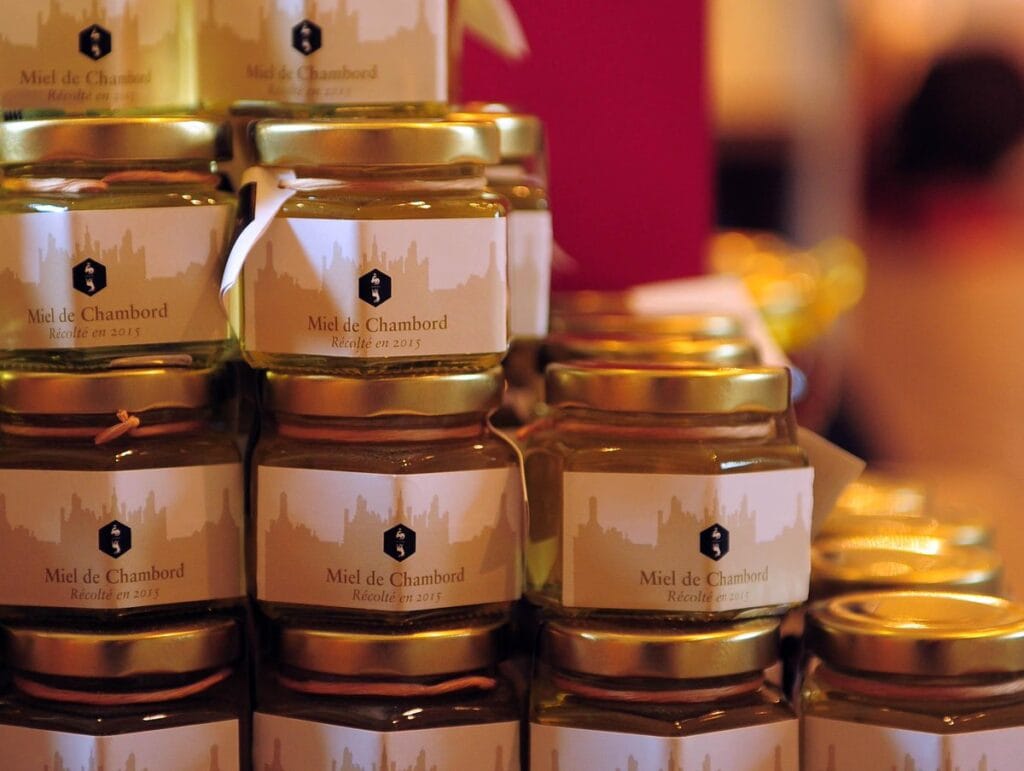
Château Chambord organic farm market
Chambord staff have created an organic farm for market gardening and fruit growing. More than forty varieties of vegetables are produced, following a cultivation system that allows increased yields to be obtained on small areas. You can purchase these market items in the farm market shop.
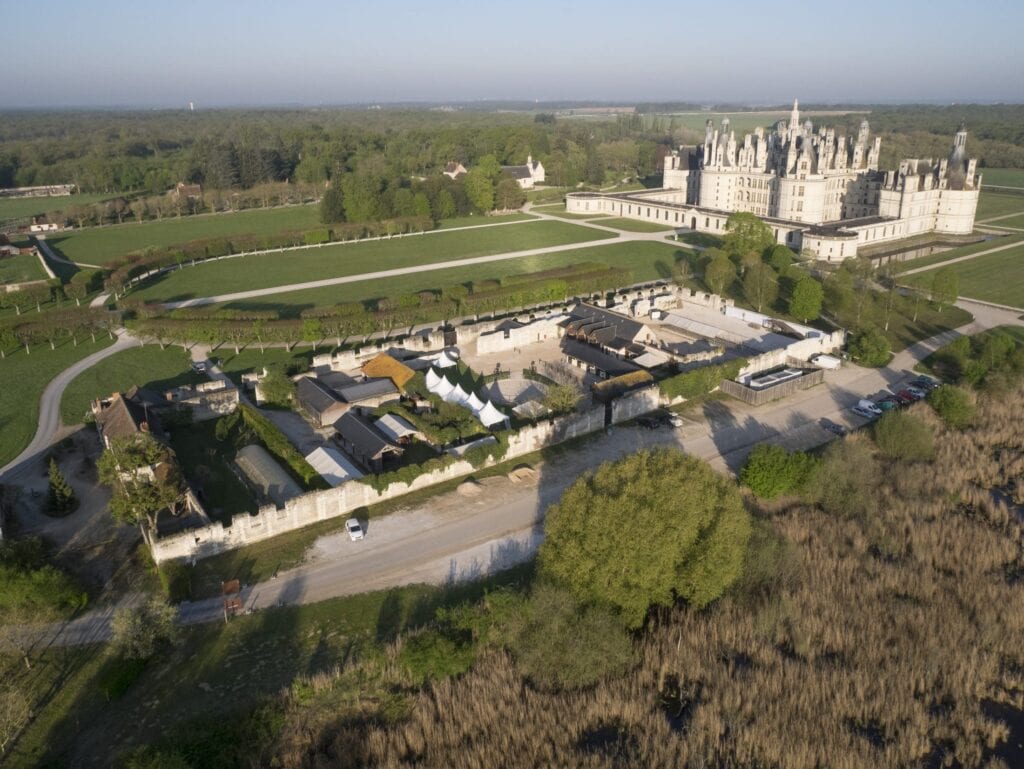
Can I get married at the Château Chambord?
The Chateau is available for rentals for any type of event you might like to create. You can get married here, have a corporate retreat or celebrate any special festival or event.
Where to stay at Château de Chambord
Just a few meters from the château or on the outskirts of the estate, for a weekend or a full week, visitors to Chambord can reside in the heart of this exceptional site.
Gîtes Cerf et Salamandre are both 4-star accommodations that can sleep up to 8 people. Each cottage has its own private garden and these luxury cottages are fully equipped for modern-day living. There is parking for several cars, four bicycles are available for your use, and a relaxing area outside in the garden with a BBQ.
Gîte La Gabillière is located on the outskirts of the Chambord forest just a few meters from the first wild animal lookouts, the La Gabillère is a one-time estate farm featuring a private garden, it is equipped to host as many as six people.
Of course, these don’t come cheap a week in high season will set you back around €1850 and low season around €1500.
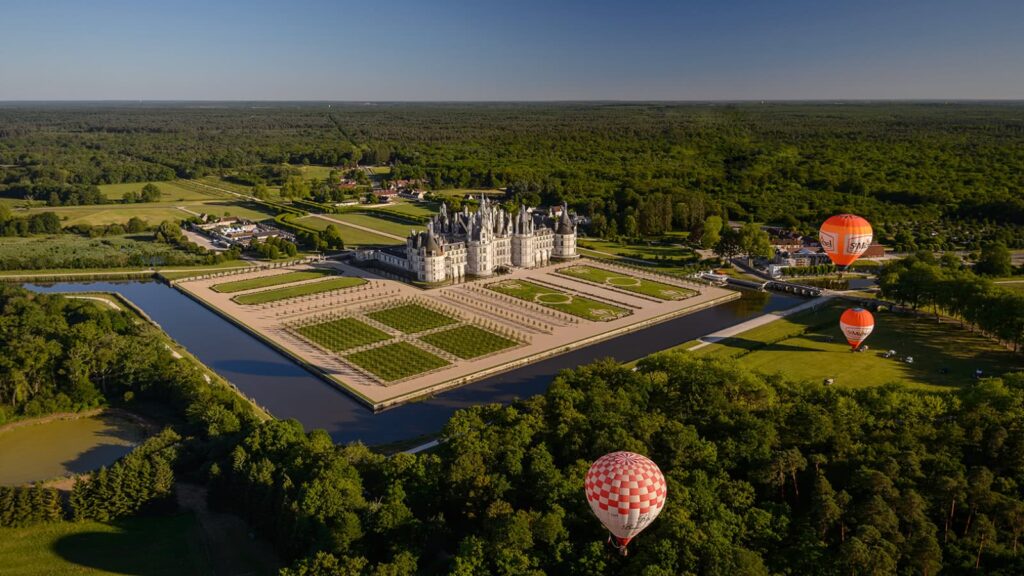
You could also stay at Relais de Chambord which is a 4-star small luxury Hotel. The hotel is a 4-minute walk from Château de Chambord and some of the rooms offer views of Chambord Castle. There is a restaurant on site, Le Grand Saint-Michel which serves modern french cuisine. There is a tennis court in addition to the wellness area with a hammam, sauna, hot tub and tea room.
Have you been to the Loire yet? What Chateaux did you see and what was your favourite?
You might also like
Château du Clos Lucé – Da Vinci’s French Castle
Chateau de Chenonceau the ultimate guide
Where to find the sublime lavender fields of France
Château de Josselin – A millennium of history in Brittany
Pin it to save it
